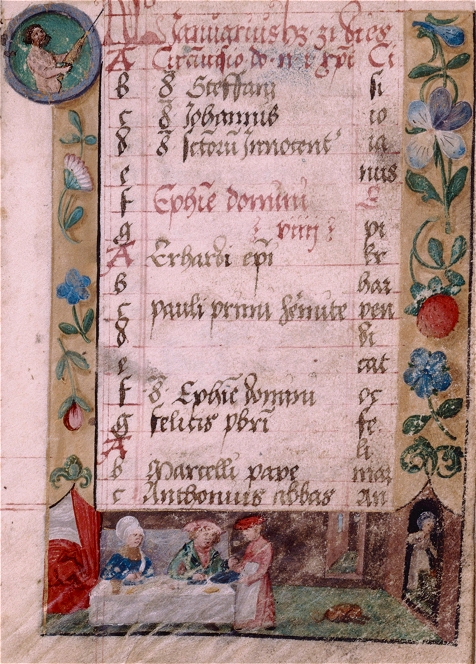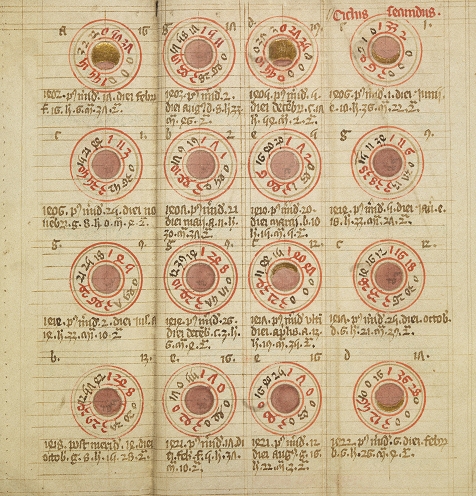- 1
- St Hugh (1053-1132)
- Fool's Day: On April 1, the jester ruled the hall and everything was backward (whiddershins). During the meal, the feasters tried to outdo each other with ridiculous tales. It was socially permissible to play tricks and practical jokes until noon.
- 2
- St. Basil (329-379)
- St Mary of Egypt (ca. 355-431)
- 3
- St Agape, Irene and Chione (d. 304)
- St Richard (1197-1253)
- 4
- St Isidore of Seville (d. 636)
- 5
- St Vincent (1357-1419)
- 6
- St William of Eskill (ca. 1125-1203)
- 9
- St Waldetrudis (Waudru) (Seventh century)
- 10
- St Fulbert (d. 1029)
- 11
- St Guthlac (ca. 673-714)
- St Stanislas (1030-1079)
- 12
- St Zeno (d. 380)
- 16
- St Magnus of Orkney (1075-1116)
- St Padarn's Day: On this day it was customary to begin weeding the growing crops.
- 17
- St Stephen (d. 1134)
- 19
- St Elphege (953-1012)
- 20
- St Agnes of Montpulciano (c. 1274-1317)
- 21
- St Anselm (ca 1033-1109)
- St Beuno (sixth century)
- 22
- St Theodore of Sykeon (d. 613)
- 23
- St George (ca. 303)
- 24
- St Mellitus (d. 624)
- St. Mark's Eve: The eve of St. Mark's Day was one of the traditional night for divining the future. Any young woman wishing to see her future lover should fast from sunset and then during the night make and bake a cake containing an eggshell full of salt, wheat meal, and barley meal. Then she should open the door of her home. Her future lover should come in and turn the cake.
- 25
- St Mark (ca. first century): Part of the observation of St. Mark's Day included seeking a blessing from heaven for the growing crops.
- Cuckoo Day: In traditional English lore the cuckoo, "St. Mark's gowk," heralds the arrival of migratory birds from the south, indicating the return of summer.
- 26
- St Stephen of Perm (1345-1386)
- 27
- St Zita (1212-1272)
- 29
- St Catharine of Siena (1347-1380)
- St Hugh of Cluny (1024-1109)
Photo credits: (Related Resources) (1) Opening page of calendar, elaborate border design with human figures, 1530, Digital Collections, The New York Public Library on Wikimedia Commons, (2) Medieval folding almanac, ca. 15th century, Wellcome Library on Wikimedia Commons, Creative Commons CC BY 4.0

